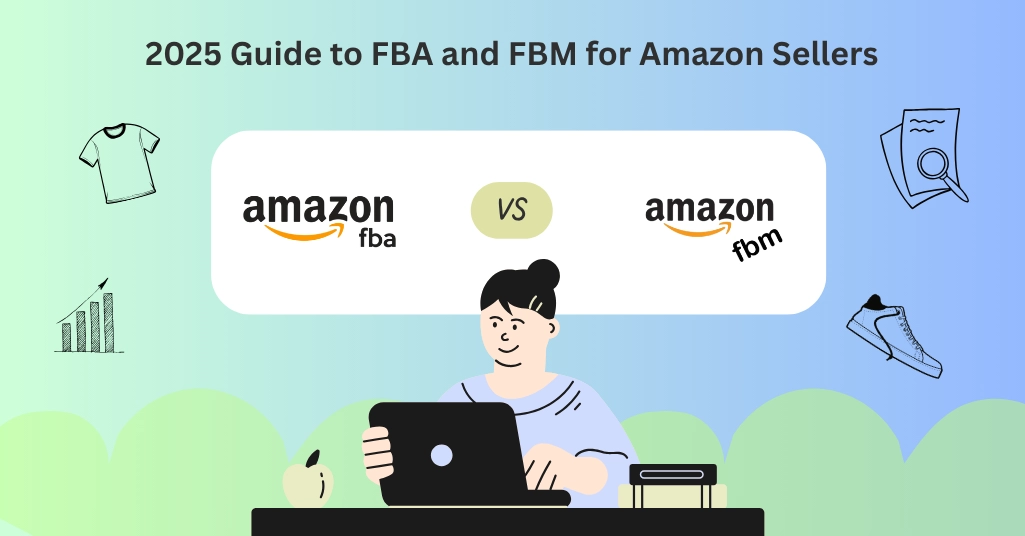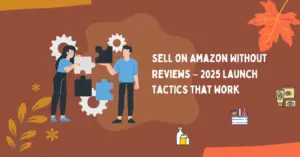Complete 2025 Guide to FBA and FBM for Amazon Sellers
Home »
Blog » Complete 2025 Guide to FBA and FBM for Amazon Sellers
Compare Amazon FBA & FBM Models for Sellers in 2025
Choosing between FBA and FBM is one of the most important decisions for Amazon sellers in 2025. The way you fulfill orders can shape your costs customer experience and long-term growth. Fulfillment by Amazon, or FBA gives access to fast shipping with Prime and takes care of storage packing and returns. Fulfillment by Merchant or FBM allows sellers to handle their own delivery process, giving more control over inventory and shipping costs. With new Amazon fee updates rising storage charges and tighter performance rules, the choice is more complex than ever. Both FBA and FBM come with their own pros and cons based on your product size order volume and business goals. This guide explains everything you need to know about FBA vs. FBM in 2025 including real cost comparisons platform trends and expert tips to help you choose the best fulfillment method for your Amazon business this year.
What Is FBA
FBA, or Fulfillment by Amazon, means Amazon handles your storage shipping customer service and returns. You send your products to Amazon’s warehouse. When a customer places an order Amazon picks packs and ships it. They also manage refunds and support.
In 2025 Amazon made key changes. There is a new fee for inbound placement when shipments are split across warehouses. Long-term storage now costs more if your stock stays over 365 days. Restock limits are tighter and based on your past sales. Sellers must also track inventory health more closely using the restock report and storage volume metrics. FBA is still a strong choice for fast-moving products and for sellers who want Prime access without managing logistics.
What Is FBM
FBM or Fulfillment by Merchant means you store and ship products yourself. You handle packing shipping returns and customer support. You can do this from your own space or through a third-party logistics company.
After 2024 FBM saw more sellers using local 3PLs and warehouse partners to speed up delivery. Amazon now gives better support for sellers using Buy Shipping, which means using Amazon-approved carriers. This helps boost tracking and delivery accuracy. FBM gives full control over shipping and branding. It works best for larger items slow sellers or products that need custom handling.
Key Differences Between FBA and FBM
FBA or FBM selection will be based on the amount of control you want in your operations and what your business requires. Following is a basic side-by-side comparison of how the two models operate in the most critical areas.
| Aspect |
FBA |
FBM |
| Storage and Shipping |
Amazon stores your inventory and handles all shipping |
You store and ship products using your own system or a third party |
| Cost Structure |
Higher fees, including storage, picking, packing, and returns |
Lower fees, but you pay for warehouse staff, packaging, and carrier rates |
| Prime Badge |
Eligible for Prime by default |
Not eligible unless enrolled in Seller Fulfilled Prime |
| Inventory Control |
Limited control – Amazon manages stock movement and placement |
Full control over stock location and availability |
| Customer Service |
Amazon handles buyer messages and return requests |
You manage all customer service and refund processes |
| Buy Box Impact |
Higher chance to win the Buy Box due to fast delivery and Prime badge |
May need lower prices or faster shipping to compete for the Buy Box |
| Performance Metrics |
Amazon controls delivery, so fewer risks to late shipment scores |
You must meet delivery promises or risk account health warnings |
FBA vs FBM Pros & Costs Guide for Amazon Sellers 2025
Both FBA and FBM come with their own set of strengths and limits. What works best depends on your product type order volume and how much control you want over the process. The table below shows a quick comparison of the pros and cons of each model in 2025:
| Aspect |
FBA |
FBM |
| Main Benefits |
- Access to Prime buyers and fast delivery
- Amazon handles all logistics tasks
- Higher chance to win the Buy Box |
- Full control over shipping and cost
- Easy-to-use branded or custom packaging
- Ideal for large low-margin or fragile products |
| Main Drawbacks |
- Higher fees, including new charges for storage and inbound placement
- Penalties for long-term storage
- No control over packaging or how the item is shipped |
- No Prime badge unless enrolled in SFP
- You must manage returns and service fully
- Harder to compete for the Buy Box without fast shipping |
When to Use FBA
FBA is ideal for sellers who handle high order volumes and want Amazon to manage storage, shipping, and customer service. It suits lightweight, fast-moving products where fulfillment costs stay low and Prime delivery gives a strong sales boost. FBA helps sellers win the Buy Box more often and reduces the need for daily logistics work. It is also the best choice for international sellers targeting US customers, as it places stock closer to buyers with faster delivery. If your focus is scaling fast, reaching Prime users, and automating operations, FBA gives you the edge.
When to Use FBM
FBM works best for sellers who want full control over storage, shipping, and packaging. It suits products with low profit margins or those that are bulky, heavy, or slow-moving, where FBA fees can eat into earnings. FBM also allows more custom branding and is a strong choice for handmade or niche items. If you already have a warehouse or a trusted logistics partner, FBM lets you manage costs better and avoid long-term storage fees. It is the right fit for sellers who value flexibility and want to control how their product reaches the customer.
Amazon Fulfillment Model Guide & Preferences for 2025
In 2025, Amazon continues to support both FBA and FBM but gives more weight to fast delivery and customer satisfaction. FBA still offers built-in Prime access, easier Buy Box wins, and hands-free logistics, which makes it the favored choice for most sellers. However, Amazon has also introduced tighter restock rules, inbound placement fees, and aged inventory charges, which now require sellers to plan inventory more carefully.
On the FBM side, Amazon supports growth through Buy Shipping tools and regional carrier partnerships. Seller Fulfilled Prime is active but stricter with entry and performance rules, making it available only to sellers who can meet high delivery standards with strong tracking accuracy and low late shipment rates.
To decide between FBA and FBM, sellers should look at product type, order volume, cost control, and staff capacity. FBA fits best for small, fast-selling items with steady demand, while FBM suits bulky, low-margin, or niche products. If your setup includes strong warehousing or third-party support, FBM may help cut costs. Many sellers now use both models based on SKU performance and profit margin. The right choice is not one-size-fits-all but depends on what you sell, how often you sell, and how much of the process you want to control.
Choose the Right Fulfillment Model for Amazon Selling 2025
To succeed with fulfillment on Amazon in 2025, sellers must stay sharp with both strategy and execution. Automating order tracking and buyer communication helps maintain customer trust across both FBA and FBM. For FBM sellers, optimized packaging not only saves costs but also reduces damage and returns. FBA sellers must closely watch restock limits, aged inventory charges, and space usage to avoid rising fees.
Keeping key performance metrics healthy, like order defect rate and shipping accuracy, is essential for account safety in both models. The best fulfillment choice is not about which model is better, but which one fits your product, your workflow, and your stage of business. Sellers should review their fulfillment plan every six to twelve months to adapt to Amazon’s policy changes, product demand, and storage trends.
For sellers looking to manage this process smoothly and scale with confidence,
Squatio stands as a reliable partner that supports fulfillment planning with data-driven insights and tools built for Amazon growth.





Complete 2025 Guide to FBA and FBM for Amazon Sellers
Compare Amazon FBA & FBM Models for Sellers in 2025 Choosing between FBA and FBM...
Share this link via
Or copy link